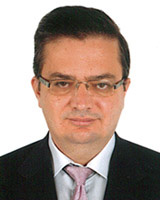Now published, see the full article 
Early Abstract:
Introduction: Turkey, which suffers from both undersupply of physicians and nurses-midwives and imbalanced distribution of health care personnel, has been developing and implementing various policies to solve this problem. The Ministry of Health (MoH) launched the Health Transformation Program in 2003 for effective, efficient, and fair provision of health care services for all people. This study aims to take a closer glance at the impact of policies implemented to reduce the imbalance of the distribution of human resources for health for the last fifteen years in Turkey.
Methods: The data for the distributional imbalance obtained from MoH registries analysed by using Lorenz curves and Gini coefficient (GC) for the years 2002, 2005, 2008, 2012, and 2016.
Results: Geographical imbalances for health care professions decreased distinguishably during the fifteen years. GC was 0.33 for specialists’ distribution in 2002, and fell gradually to 0.26 in 2008 and finally 0.21 in 2016. Similarly, these GCs were 0.18, 0.20 and 0.25 for general practitioners, nurses, and midwives, respectively, in 2002. In 2012 GCs for the same professionals were calculated as 0.09, 0.11 and 0.19 respectively.
Conclusion: The findings indicate that the policies targeting the distribution of the health care personnel in Turkey, have yielded positive results. Yet, it is evident that these results are not due to a single action merely. It is essential to improve the existing implementations, search for the instruments and factors to satisfy and motivate health care personnel, and continue developing and implementing comprehensive policies.


